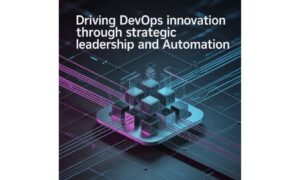DevOps has become an essential part of the software development industry, allowing for faster and more reliable delivery of applications and features. By embracing a DevOps culture, development and operations teams can work together seamlessly, ensuring that applications are built and deployed quickly and efficiently. In this article, we will explore the benefits of incorporating DevOps practices into your development processes and how these practices can help streamline the entire software development lifecycle.
Understanding the DevOps Culture
At its core, DevOps is a set of practices that aim to bridge the gap between development and operations teams. By fostering collaboration, communication, and integration between these teams, organizations can break down silos and increase the overall efficiency of their software development processes. DevOps practices facilitate faster release cycles, streamlined development processes, and improved application quality by emphasizing automation, monitoring, and other key principles.
Continuous Integration and Deployment
One of the main tenets of DevOps is the implementation of continuous integration and continuous deployment (CI/CD) pipelines. These pipelines automate the build, testing, and deployment steps of the software development process, ensuring that code changes are merged and deployed to production environments as quickly as possible. The benefits of CI/CD include reduced cycle times, the ability to catch issues earlier in the process, and increased confidence in the quality of the finished product. Implementing CI/CD pipelines can greatly enhance the efficiency and effectiveness of your development teams.
Infrastructure as Code
Managing infrastructure is a crucial part of deploying and maintaining applications, and traditional methods of manual configuration can be time-consuming and error-prone. With Infrastructure as Code (IaC), development and operations teams can manage infrastructure using the same version control and automation tools they use for application code. This approach allows for more efficient provisioning and management of resources and ensures consistency across environments. By adopting IaC, you can simplify infrastructure management and accelerate the deployment process.
Automated Testing Practices
A robust testing strategy is critical to ensuring the quality of your applications. In a DevOps environment, automated testing is used to validate code changes quickly and thoroughly. This includes unit tests, integration tests, and acceptance tests, all of which can be integrated into the CI/CD pipeline. Automated testing helps catch defects earlier in the development process, reducing the time and effort required to fix them while improving application quality and reliability.
Monitoring and Observability
Incorporating comprehensive monitoring and observability practices is another essential aspect of a successful DevOps culture. By closely monitoring system performance, infrastructure health, and application performance, teams can quickly identify and address issues before they impact users. Observability tools provide deeper insights into system behavior and enable more efficient troubleshooting and root cause analysis. By implementing a robust monitoring and observability strategy, you can proactively ensure the reliability and performance of your applications.
Collaboration and Communication
One of the key goals of DevOps is to break down silos between development and operations teams. To achieve this, it is essential to foster a culture of collaboration and open communication. Encouraging regular communication between teams through meetings, shared chat channels, and other collaboration tools helps increase visibility into ongoing projects and streamlines decision-making processes. By promoting a shared understanding of the development lifecycle and each teams role in it, you can ensure smoother collaboration and improved overall efficiency.
Effective Incident Management
Despite the best testing and monitoring practices, incidents and unexpected issues can still occur. Effective incident management is crucial for minimizing the impact of these events and maintaining a high level of service quality. In a DevOps environment, this often involves integrating incident management tools with existing development and operations workflows to ensure a rapid response and quick resolution. By defining clear escalation paths and involving the necessary parties in the incident management process, you can mitigate the effects of incidents and maintain application reliability.
Scaling DevOps Practices
As your organization grows, it is important to ensure that your DevOps practices can scale along with it. This can involve implementing more advanced infrastructure management technologies, expanding automated testing coverage, and adopting new tools for monitoring and observability. By continually refining your DevOps practices and embracing new technologies, you can ensure that your development and operations teams remain efficient and effective as your organization grows and evolves.
Conclusion
DevOps practices have fundamentally revolutionized the way that software development takes place. By fostering collaboration, communication, and integration between development and operations teams, organizations can streamline their development processes and deliver higher quality applications more quickly. Incorporating continuous integration and deployment, Infrastructure as Code, automated testing, monitoring and observability, and effective incident management can greatly enhance the overall efficiency and effectiveness of your development teams. By embracing a DevOps culture, you can ensure that your organization is well-equipped to tackle the challenges of modern software development and deliver exceptional products to your users.



































